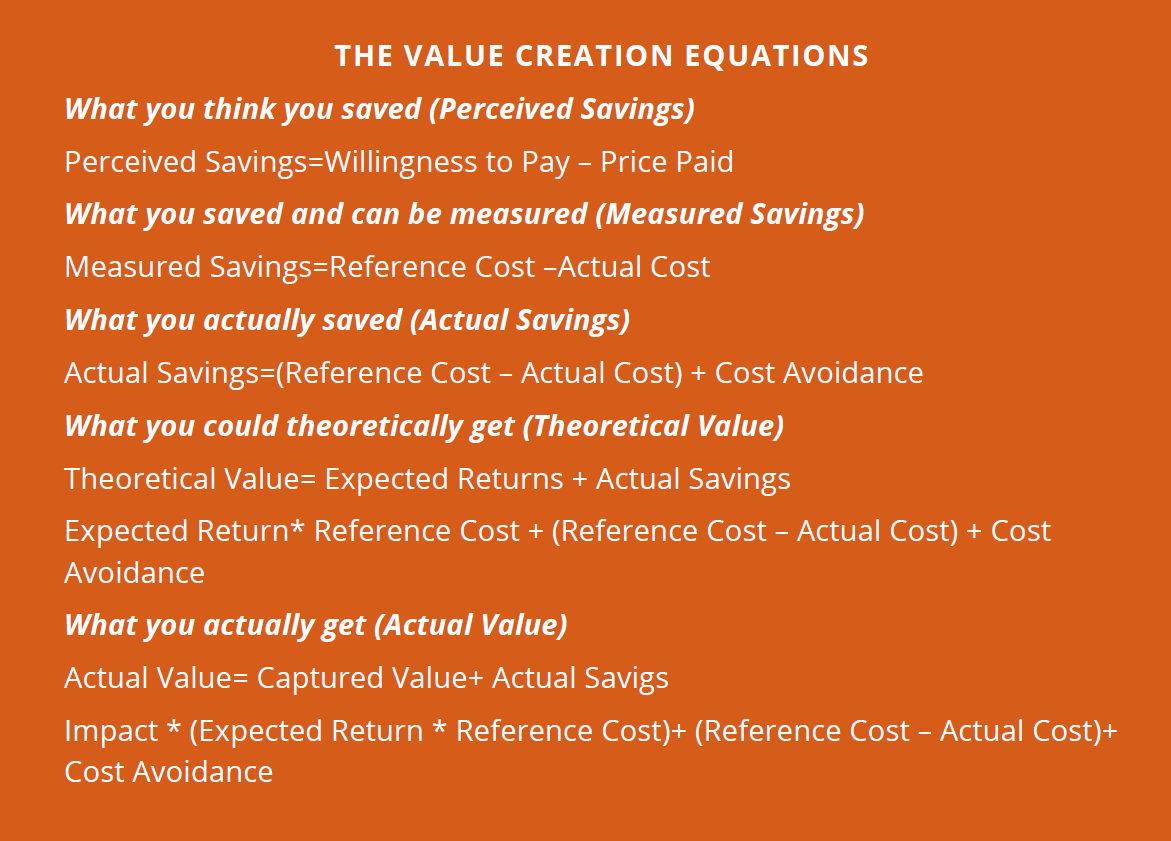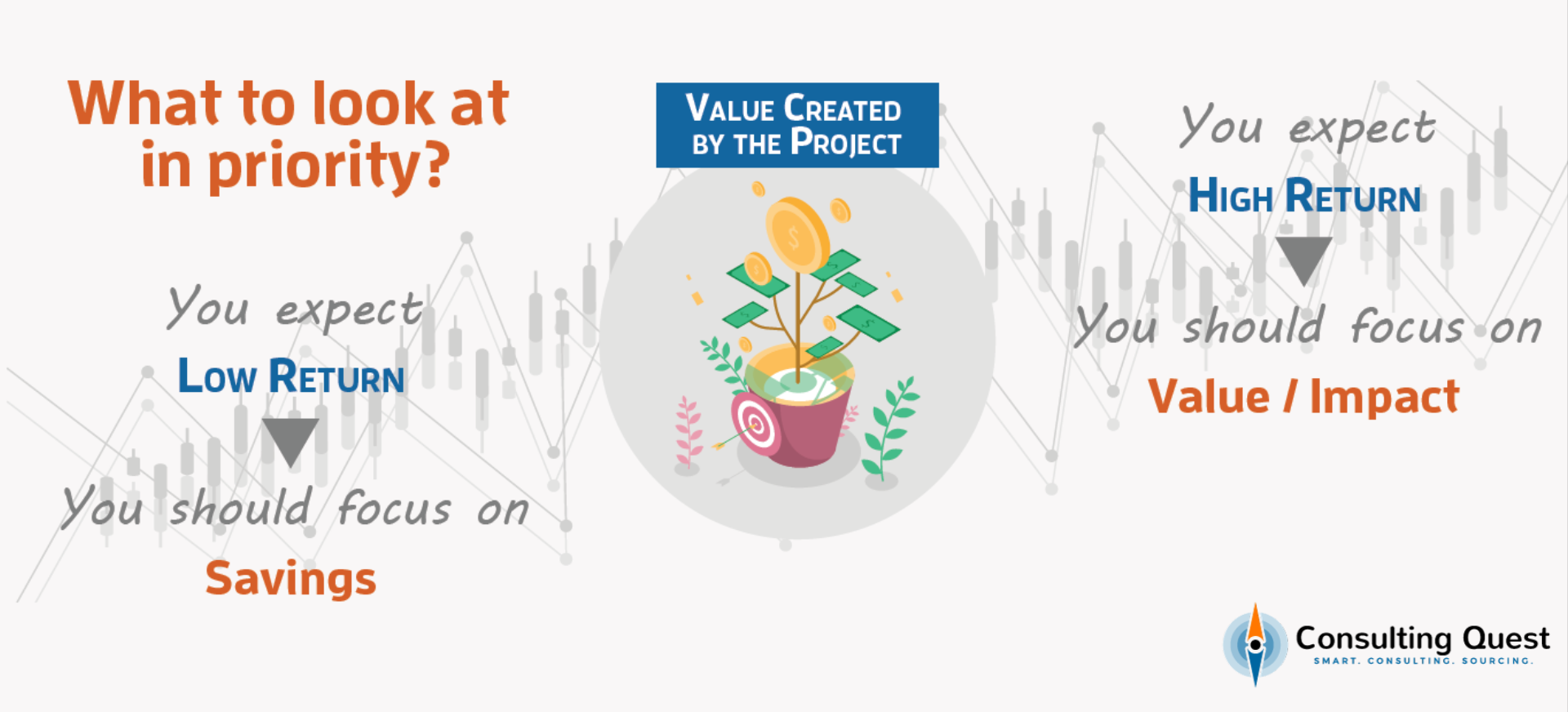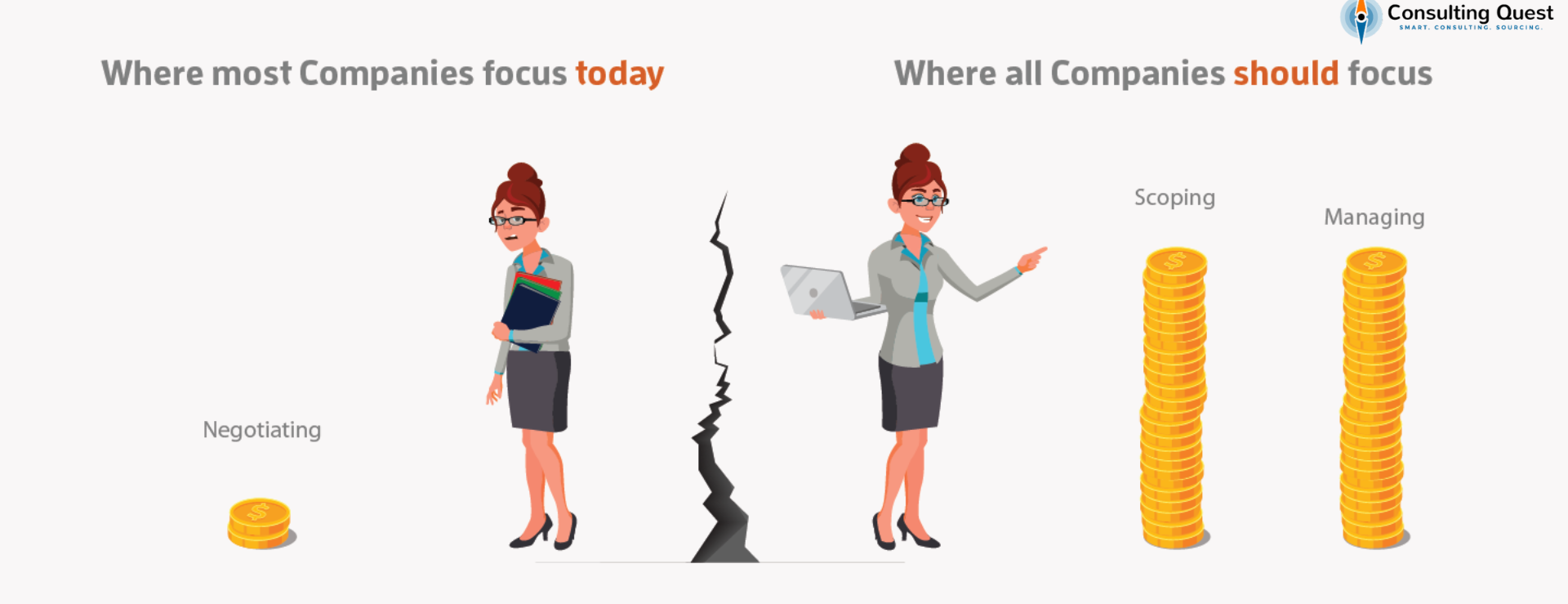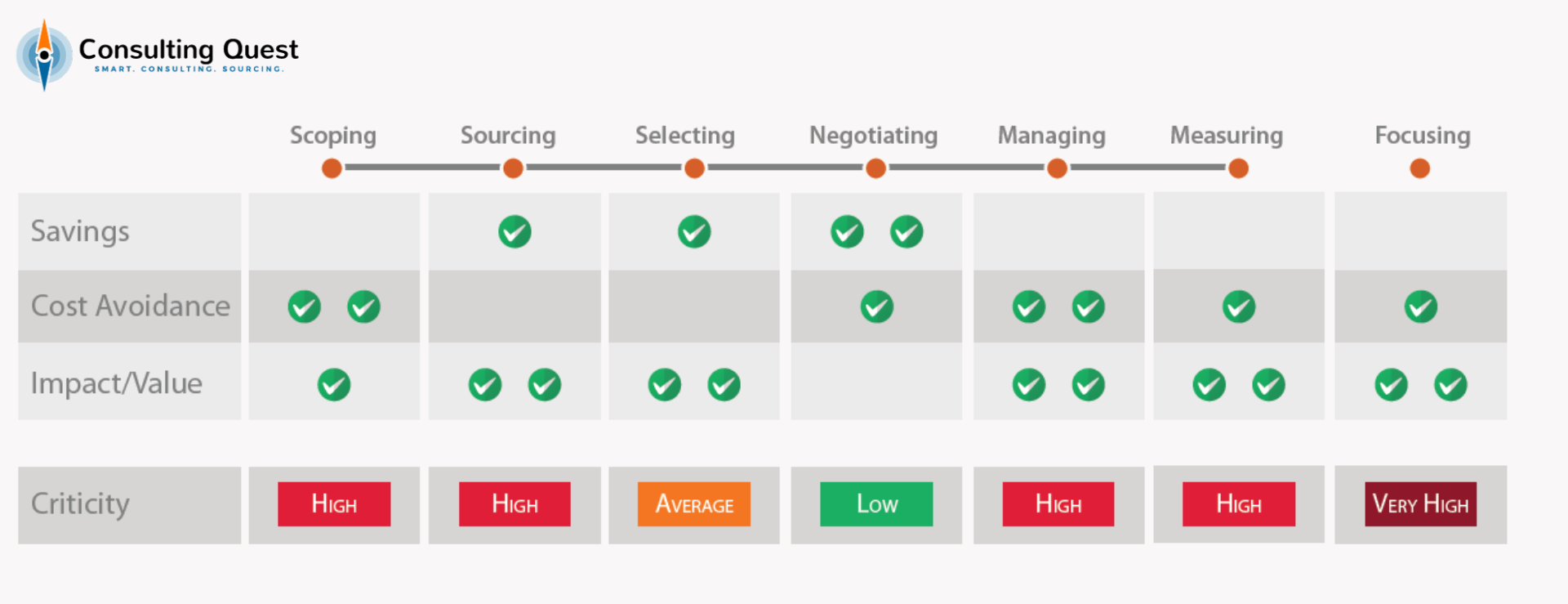Table of Contents
Let’s consider the scenario, where you want to enhance your high jump performance. Even individuals who could barely clear 1.5 meters in high school are aware that numerous factors influence the final result.
Of course, perfecting your technique is crucial, including aspects like the run-up, take-off, and clearing the bar. But beyond that, achieving success involves executing at full speed, starting the run from the correct distance, and positioning your jump foot accurately.
Additionally, it necessitates working on your physical condition, strengthening your legs and core, improving flexibility, and adopting healthier eating habits. You cannot become a full-time professional athlete, suddenly. It’s vital to focus on the key elements that will have the most significant impact on the value from consulting.
Similarly, when it comes to sourcing consulting projects, there are several steps that demand your attention. The essential question is understanding where to focus your efforts to maximize the value of consulting you gain from the sourcing process.
Performance Management in Procurement
If you look up the various methods to measure procurement performance, you will find that most metrics focus on the value from consulting, speed, spending under management, generated savings, cost avoidance, and impact on working capital.
In some limited cases, you will find elements linked to vendors’ performance, and for the most mature organizations, you will see some elements about risk management and value created.
Kate Hart from CIPS Australia identifies these key attributes that drive procurement performance: spend visibility, process efficiency, talent management, supplier performance, and strategic alignment.
For each category, the performance of the organization can be mapped along efficiency and effectiveness dimensions. Efficiency relates to “doing things right” (costs, staff, productivity, technology, cycle time), while effectiveness relates to “doing the right things” (savings, leverage, error rates, customer satisfaction).
More and more thought leaders in procurement look at performance using two categories. The first category relates to cost reduction as a combination of savings achieved and the associated cost to obtain those. The second relates to the value from consulting created by triggering new opportunities or opening new business models (open innovation).
Using the above playbook, let’s see how this logic applies to the procurement of consulting services, what are the key steps that will yield savings, and those that can indeed create value from consulting!
The Value from Consulting in the Procurement Process
Each individual step in the procurement process produces a distinct and specific value from consulting. Let’s have a look!

#1. Scoping
Scoping properly has a direct impact on the overall cost of a project. Scope on the wrong problem, and you spend a lot of money for nothing; scope on a subject too wide and you will pay for more than you actually needed or use the wrong consultants for part of the job.
The primary lever associated with scoping is cost avoidance. The secondary lever will be impact and the value created. The consequences can be significant as scoping mistakes can lead to 50 to 100% extra costs, and the value missed could have a significant opportunity cost.
For Example:
You have decided to screen potential acquisitions, identify the best fit for your company, approach the target, negotiate the acquisition, and integrate the target. From a scoping standpoint, the temptation can be high to write an RFP that will encompass all these steps.
However, you may want to use a consulting firm for the first step, do the second one internally, use a bank for steps three and four, and engage another consultant for the integration. This approach allows you to optimize costs and maximize the value of consulting across the project.
#2. Sourcing
Sourcing the right consultants for your project is key to making sure you get the right value from consulting at the end of the process. Besides, organizing a relevant competition will ensure competitive proposals and will provide some leverage for negotiation.
The primary lever will be savings (versus a non-competitive process), and the secondary lever will be linked to the impact of the project and the value your consultants will be able to create.
The consequences associated with this step are high. Without proper sourcing and relevant competition, you will lack proper leverage. You also risk working with the wrong consultants.
From our experience, we’ve found that setting up a relevant competition can yield 30 to 50% savings. Obviously, working with the wrong consultants can significantly reduce the impact of the project. As a working assumption, a 25 to 50% impact difference on the end results seems reasonable.
For Example:
A telecommunications company works primarily with the same three consulting firms. The company may have the impression that it has created healthy competition. But for this competition to be perceived as genuine, all three consulting firms have to win regularly. Not all work can go to the same incumbent.
What would be the most logical strategy for the three competitors? Price low and get maybe half of the projects or price high and lose two-thirds of the projects? As the telecommunications company has involuntarily created a virtual oligopoly, the latter strategy is indeed the most profitable—for the consultants.
#3. Selecting and Negotiating
The selection and negotiation steps of the process yield quite similar benefits. On the one hand you make sure that you are working with the partner that will be right for your project. On the other hand, you negotiate terms and conditions that will contribute to additional savings.
The primary lever will be savings (versus a non-competitive process), and the secondary lever will be linked to the impact your consultants will be able to create. The consequence of this step is directly linked to the sourcing one.
The savings of pure negotiation are often ranging between 5 and 15% while the optimization of the scope and re-allocation of resources from one activity to another can also provide 5 to 10% extra impact for the project.
For Example:
An insurance company has an urgent project to launch; they have looked internally and don’t have the resources. They will have to use some consultants for both expertise and workforce.
If they have only bilateral discussions with one consulting firm and convey the urgency of the need during one of the exchanges, what do you think will be the impact on the consultant’s pricing? If the company has at least one relevant alternative, will it be the same outcome?
#4. Managing
To assess the importance of the managing step, you can simply picture an internal project lacking project management, governance, or support from key stakeholders.
What are the odds of getting something meaningful achieved? Pretty low, it would seem. The same is true for consulting projects. Without proper management, you will be at risk.
The primary lever will be cost avoidance, as you might end up funding a project for nothing, and the secondary lever will be linked to the value the project will be able to create.
Not managing the project properly can waste up to 100% of the project cost (not accounting for the wasted time from your teams), and you could fail to get the impact you were expecting from the project itself.
For Example:
An industrial company decides to launch a global benchmark on the performance of its operations. The project is very ambitious, comparing all sites among them, leveraging various benchmarking data, and sizing drivers.
The objective is to identify the perfect unit’s profile and derive change plans with efficiency targets for all units. The project sponsor is the industrial director. Unfortunately, the industrial director gets a new job opportunity midway through the project and leaves the company.
The new director does not want to have as his first signature project something he perceives as a cost optimization program. As there is no formal governance beyond the industrial director, the number of stakeholders supporting the project is limited.
At the end of the day, the project continues its course but progressively loses momentum. And at the end of the project, the recommendations are shelved, and the company barely recovers the cost of the project.
#5. Measuring
There is only a limited number of companies managing the performance of their consultants. Indeed, only a handful of companies have a consolidated view of how much they are spending and with whom.
The primary lever for implementing measurement of the performance will be opportunity loss on the impact of the project and the value that the project should have created. The secondary lever will be cost avoidance, as you might end up working with consultants more expensive than needed.
The loss on the impact can be up to 25% to 50% of the project expected value, assuming the consultants you are working with are lacking some expertise but are still showing some degree of competence.
Obviously, this could be more. To this, you can also add the over cost in case you end up working with overpriced consultants.
For Example:
A large retail bank in the US had decided to restructure its branches. The retail bank was organized by region. Since the top management had a good relationship with a top-tier strategy consulting firm, they decided to use it for the organizational redesign.
The firm was extremely competent on strategy for financial services but had little experience in organization and change. The company ended up paying a strategy consulting firm premium for organizational work that could have been done better by smaller specialized companies.
Making matters worse, the consulting firm used this reference to sell similar projects in other areas of the bank. In the absence of proper performance measurement, other executives were unaware of the average performance on the initial project.
#6. Focusing
When looking back at how you used your budget the year before, there is always a moment where you realize that you should have allocated more to one area and less to another and should definitely not have done some projects.
Focusing efforts on a limited number of impactful projects often yields a much greater value of consulting than stretching efforts across a large number of minor projects. The primary lever when focusing your efforts will be on the impact of the project; thus, the value created.
The secondary lever will be on cost avoidance by preventing investments in non-value creating projects. It can be difficult to assess what the impact can be since it relates to the quality of your demand management.
However, assuming you can redirect 25% of funds to a higher value project can be a good proxy.
For Example:
A CPG company was using a lot of consulting. However, the company had a very decentralized culture, and the departments managed budgets. Budgets had historically been higher in the manufacturing and communication departments.
As a direct consequence, the company was lagging in other functions such as procurement and supply chain.
Without a centralized view of how consulting was spent, the expected returns, and the consistency of the strategy, the company was simply investing year after year in the same areas.
The Value Creation Equation
There are many schools of thought regarding how value coming from consulting can be put into equations. Let’s try to explore these schools of thought from the simplest to the most elaborate.
The simplest way to look at the value created is to consider the savings side of the equation. The value is what you were willing to pay for a given project minus the price you actually paid.

For example:
Therefore, if you were willing to pay 100 for a given project and ended up paying 80, you would have a perceived savings of 20.
Unfortunately, your willingness to pay is all relative as it is at times difficult to assess and might not represent the actual value of the service. You could, therefore, consider the value created using a more robust savings stick.
Compare the actual cost to what you would have paid if you had selected one of the highest bidders (reference cost). You could refine this notion and take the average of a representative sample of proposals. Make sure in this case to consider the full cost, including bonuses and expenses.
For example:
If you paid 80 and the average full cost of the proposals was 90, you would consider a measured savings of 10.
Though this notion partially covers the impact of good sourcing and a good selection/negotiation, it, unfortunately, does not address the value brought by a high-quality scoping exercise.
If you buy more than you need, you are tapping into an infinite reservoir of cost avoidance. For instance, why would you purchase a market study covering the entire market when you only need one segment?
For example:
If you saved 30 by properly scoping the project and optimizing resources utilization, plus 10 coming from the competition, you could consider having an actual savings of 40.
Consider a cost corresponding, for instance, to one year of savings. The net present value over ten years with a 10% discount rate is around seven times the costs engaged. The expected return in this example would be 7.
So if you were anticipating a reference cost of 90, ended up with an actual cost of 80, and had avoided 30 through a smart scoping, you would have in captured a theoretical value of 7*90+(90-80)+30 = 670 — quite a step change vs. the sole savings.
However, you probably would not have launched the project if it was not creating an attractive theoretical value for your company. Depending on your company and your propensity to use consulting, the expected returns can be quite high.
At a minimum, the costs have to be paid back within a year. By experience, the expected returns are usually at a minimum three times the cost. Interestingly, you can see that if your expected returns are greater than three, the first part of the equation will always trump the second one.

The only caveat to this reasoning is that, depending on the projects and the quality of the providers you select, you may not achieve the full expected return. The correction factor can be referred to as the impact. Experience shows that the impact can indeed be quite heterogeneous.
For example:
If the consulting project captures only half of the expected value for various reasons, we can consider an impact of 0.5 to be applied to the theoretical 630. You would have a captured value of 315 to be added to the actual savings of 40. The actual value becomes 355.
There are three major factors in this equation.
- Demand management will determine the expected returns.
- Quality of sourcing and negotiations will drive the savings.
- The efforts of the scoping will pay off through cost avoidance while selecting the right consultants and managing them properly will drive the impact.
Unless the expected returns from the project are quite low, the impact will be the determining factor.
Where to Focus Your Efforts to Maximize the Value of Consulting?
So, the question is, where to focus your efforts in the consulting sourcing process in order to maximize the value of consulting? Let’s have a look!
Where the Focus is Today?
Many organizations are leaving consulting procurement to the executives needing the services. In this case, the executives usually focus on scoping the project and managing it.
The sourcing and negotiation parts are often overlooked as the organization manages a critical mass large enough. When organizations leverage the procurement teams, they tend to address consulting procurement as an indirect purchase, among other things.
As such, the procurement organization is often looking at savings as a measure of performance. Therefore, the focus is on organizing a proper competition and negotiating lower prices at the back end of the process.
Where Should the Focus Be?
In the same way that mature procurement organizations for direct purchases are looking at the total cost of ownership, mature consulting procurement organizations are now looking at the entire value equation.
This will drive a much higher focus on the impact and the value created. Those organizations are also implementing some form of demand management to make sure they invest where the most value will be created.
Consequently, the focus is placed on selecting the right projects, sourcing the right consultants, and managing them during the project to maximize the impact achieved. This does not prevent them from taking care of the savings side of the equation but will ensure an optimum result.

How to Go Beyond?
If you need to remember just one simple rule when it comes to the value created through the sourcing of consulting projects, remember this:
Unless the expected impact is low, the value created by the project itself will most of the time outweigh the savings realized through the sourcing. It is particularly true when you look at one specific project.
If you are using consulting on a regular basis and are managing a portfolio of providers, many other actions can yield substantial value. These actions will range from implementing a performance management system to ensuring full alignment between your priorities and your consulting investments.
By focusing on the value of consulting and maximizing its impact throughout the sourcing process, you can achieve significant returns and drive successful projects. Remember, value is not just about cost savings, but also about the tangible benefits and positive outcomes that consulting can bring to your organization.
5 Takeaways for Busy Executives
- Value in consulting is a combination of savings, cost avoidance, and impact (ROI).
- Each step in the process provides a different value from consulting.
- For projects with low expected returns, you should focus on savings.
- For a project with high expected returns, you should focus on impact.
- Companies tend to spend too much time on negotiations and not enough on scoping and managing their projects.






